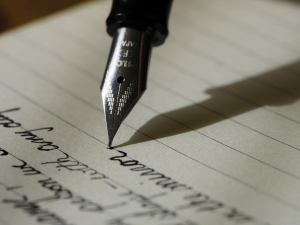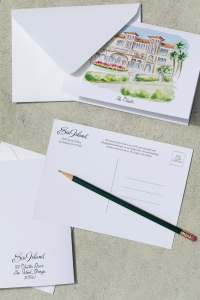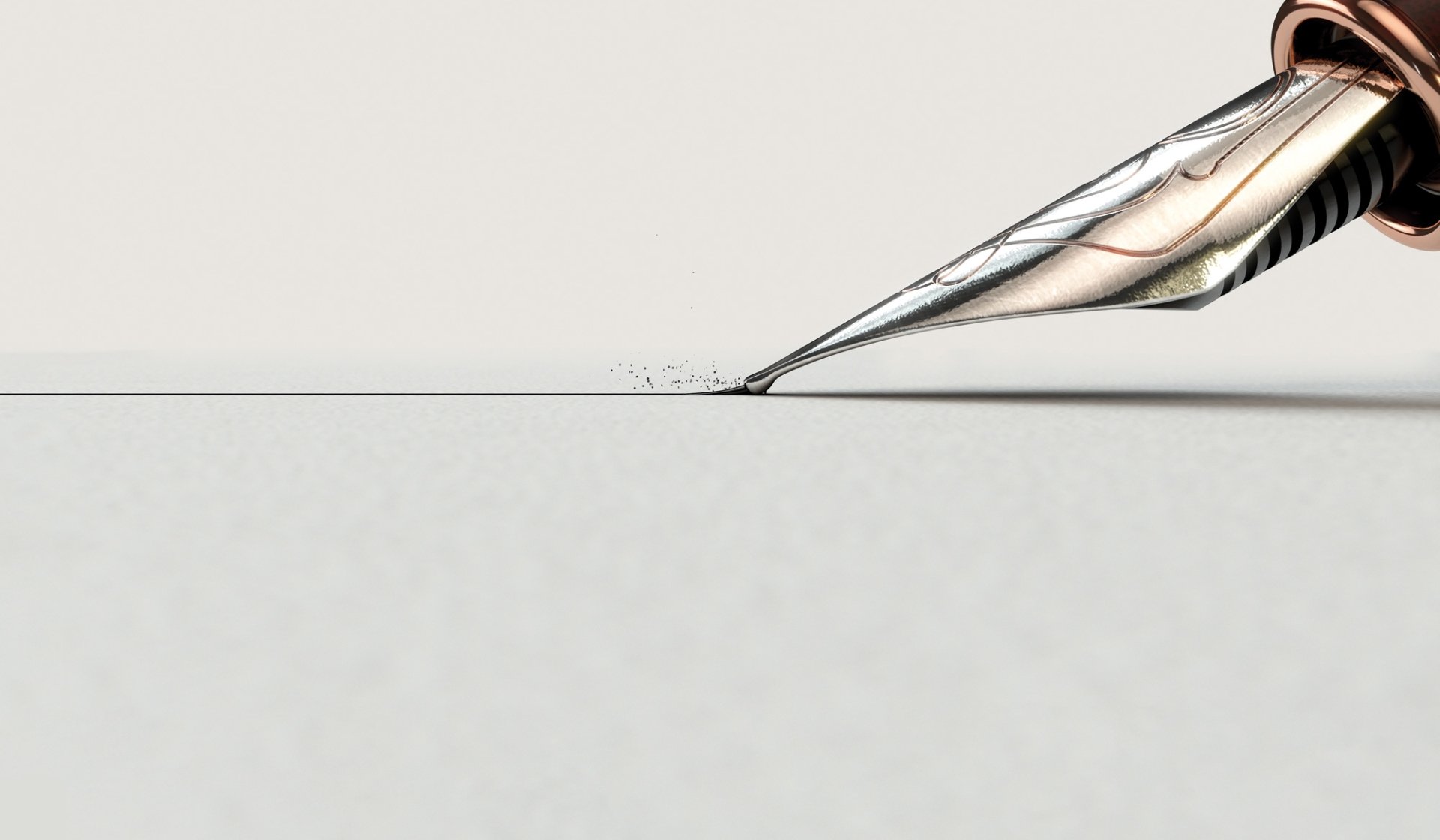Power Of The Pen
Our handwriting conveys a wealth of meaning.
Once upon a time (but not so long ago), people eagerly awaited the arrival of the mail, hoping for a note or card bearing the familiar handwriting of a distant loved one. Letters sometimes took months to reach the person to whom they were addressed and often traveled in the holds of ships that braved wild seas. Today, now that email and texting have become instantaneous digital de facto forms of saying hello or sharing news, handwritten letters carry even more intimacy and significance.
Though we recognize writing as a form of communication, it may come as a surprise to learn how much we actually reveal about ourselves through the way we space our words and form letters, and even how those letters are slanted on the page. Our handwriting is as individual as we are. Our careless or artful swoops, scrawls and flourishes can convey such traits as personal confidence (or its lack), whether we’re secretive or open, and even if we’re accident-prone. The self-imposed versions of latitude and longitude we use to position our words within margins and between lines can even expose us as loners or social butterflies.
LINKS BETWEEN PAST AND PRESENT
Old, handwritten letters and missives from family members and ancestors can offer crucial insight into who they were and impart a powerful link to our past.
 Clinical psychologist Donna Whipple is the owner of All Things Handwriting, president of the New England Society for Handwriting Analysis and is a current member and former board member of the American Handwriting Analysis Foundation. Whipple is also certified as a cursive coach by the New American Cursive Penmanship Program. She has a particular interest in genealogy and has assembled a personal collection that includes letters written by her aunt, who was a nurse during World War II. She explains that like photographs, handwritten cards, journals and letters are treasures that many people count among their dearest possessions.
Clinical psychologist Donna Whipple is the owner of All Things Handwriting, president of the New England Society for Handwriting Analysis and is a current member and former board member of the American Handwriting Analysis Foundation. Whipple is also certified as a cursive coach by the New American Cursive Penmanship Program. She has a particular interest in genealogy and has assembled a personal collection that includes letters written by her aunt, who was a nurse during World War II. She explains that like photographs, handwritten cards, journals and letters are treasures that many people count among their dearest possessions.
Much of the work she does in handwriting analysis involves the study and evaluation of old letters, which she uses to develop a personality profile of a document’s author based on features in the writing. She was recently contacted by a young woman whose grandfather had written his own obituary — but no one could read it because it was written in cursive. Whipple was able to translate the letter and provide insight about the writer for the family.
“Handwriting is the only personality assessment method that can be used to gain insight on someone who is no longer alive,” explains Whipple. “We can tell a lot about a person from their writing. A handwriting analysis profile is an excellent addition to a genealogy profile of an ancestor, and genealogy buffs are one of the most common types of people to contact me for an analysis. Authors who are preparing biographies on historical figures are a common seeker of analyses as well.”
THE BRAIN CONNECTION
As debates continue to rage about whether or not cursive writing should be included in school curriculums, many experts remain adamant that learning cursive writing is essential to optimal brain development in children.
Research and peer-reviewed studies support this stance, including work done by Jane Yank, Ph.D. The conclusions strongly suggest that children who learn to write by hand, particularly in cursive, have better skills in a host of areas. Among these are language learning, spelling, abstract and complex thought processes, cognitive flexibility, information synthesis and retention; and reading — including faster letter recognition, identification, comprehension and retention.
Further research shows that children who learn to write words and numbers have better-developed math skills and understanding. Research by Yank and other experts reveals that initiating the use of keyboards prior to the establishment of reading skills reduces the development of literacy; while attaining skills in writing has a positive effect on memory and mental acuity. Whipple adds that writing by hand also improves self-confidence, creativity and problem-solving skills.
ADVENTURES IN FORENSICS
Multiple areas of study have to do with the art of handwriting: chirography is the study of style and character; diplomatics refers to determining the provenance of written documents; graphonomics is the scientific pursuit of the process of handwriting; and palaeography is the analysis of script. The science connecting an individual to their handwriting is so strong that handwriting analysis experts are often key witnesses in court cases requiring document authentication and in establishing the presence of forgery.
Forensic document examiner Richard L. Orsini is a certified graphologist, document examiner and diplomate with the American Board of Forensic Examiners. He is also a licensed private investigator and the author of numerous books. During his extensive career, Orsini’s expertise as a forensic graphologist has made him the key examiner and handwriting profiler of thousands of documents and an expert court witness on more
than 100 occasions.
The professional analysis of handwriting is invaluable in many criminal cases. If you’re considering the possibility of becoming a fabulously successful forger who dashes through Europe in a vintage Jaguar while evading capture, you may want to worry that Orsini — or someone like him — will be hired to track you down.
“Your handwriting is as unique to you as your fingerprint,” notes Orsini. “It’s so unique that a person is unable to exactly duplicate their own signature. Take a blank sheet of unlined paper and a ball point pen. Write your name 10 times and your signature will always be different; the spaces between letters, the crest line and base line; even the writing pressure will vary. You simply cannot duplicate your own signature.”
Though other variants including writing surface, type of pen, or state of mind can affect an individual’s handwriting from one moment to the next, there’s still a forensic link that connects the written word to a specific person.
“Consider that the purpose of handwriting is to communicate,” Orsini continues. “If the writing is illegible, the person may be uncommunicative or trying to hide something. People who write left of the margin are often accident prone. Smooshing words on the right means the same thing. Wide spacing between words generally indicates a loner who lacks social skills.”
Happily, when you do something to change aspects of your handwriting to make it better, you can shift the negative trait associated with it. According to Orsini, a loner who deliberately works to close up those large gaps between words can subconsciously and psychologically help themselves to be more social.
WRITE NOW
By now, you should be ready to break out your best stationary and favorite pen. If your supplies are low, stock up before National Handwriting Day on Jan. 23 when penmanship is celebrated. This nationally recognized day was created in 1977 by The Writing Instrument Manufacturers Association out of concern that handwriting was becoming a lost art.
It’s an observance that was a long time coming, if you consider that the origin of handwriting dates back to around 3,400 B.C. in Mesopotamia. Back then, writing by hand was a sign of social status, restricted to members of royal families; and later, to trained scribes.
Today, those limits no longer exist. So pick up a pen or pencil, and find something lovely to scribble on. Remember
that your letter or card is likely to be saved and treasured, and perhaps re-read many times over the coming years. Ample reasons, if you needed any, to send someone you care about a letter written in your own hand.
 THE WRITE STUFF
THE WRITE STUFF
The experts agree: Handwriting develops your brain — the more you write, the smarter you become. The physical act of writing something out by hand develops the bridge between the brain’s left and right hemispheres. A handwritten note or card also carries extra emotional significance for the recipient.
Like many people, expert Donna Whipple loves papers, pens and notecards made of thick ivory paper.
“What is better than that?” she comments. “Maybe I am old-fashioned, but I appreciate the time it takes for someone to pen me a letter or thank you note. Seeing someone’s writing on a thank you note feels so much more personal.”
Ready to use your own script to craft a gorgeous, handwritten message? The shops at Sea Island offer a charming selection of stationary and other paper products to help.
- Postcards showcase four different resort images: the Avenue of the Oaks, golf at The Lodge, Black Banks Terrace at The Cloister and the Sea Island Explorer ($3 each at the Sea Island Shop, Surf Shop and at The Lodge Pro Shop).
- One style of notecards displays a color rendering of the front of The Cloister, while additional notecards feature separate watercolor images of Black Banks Terrace at The Cloister, The Chapel, poolside at the Sea Island Beach Club and The Lodge ($6 each at the Sea Island Shop).




